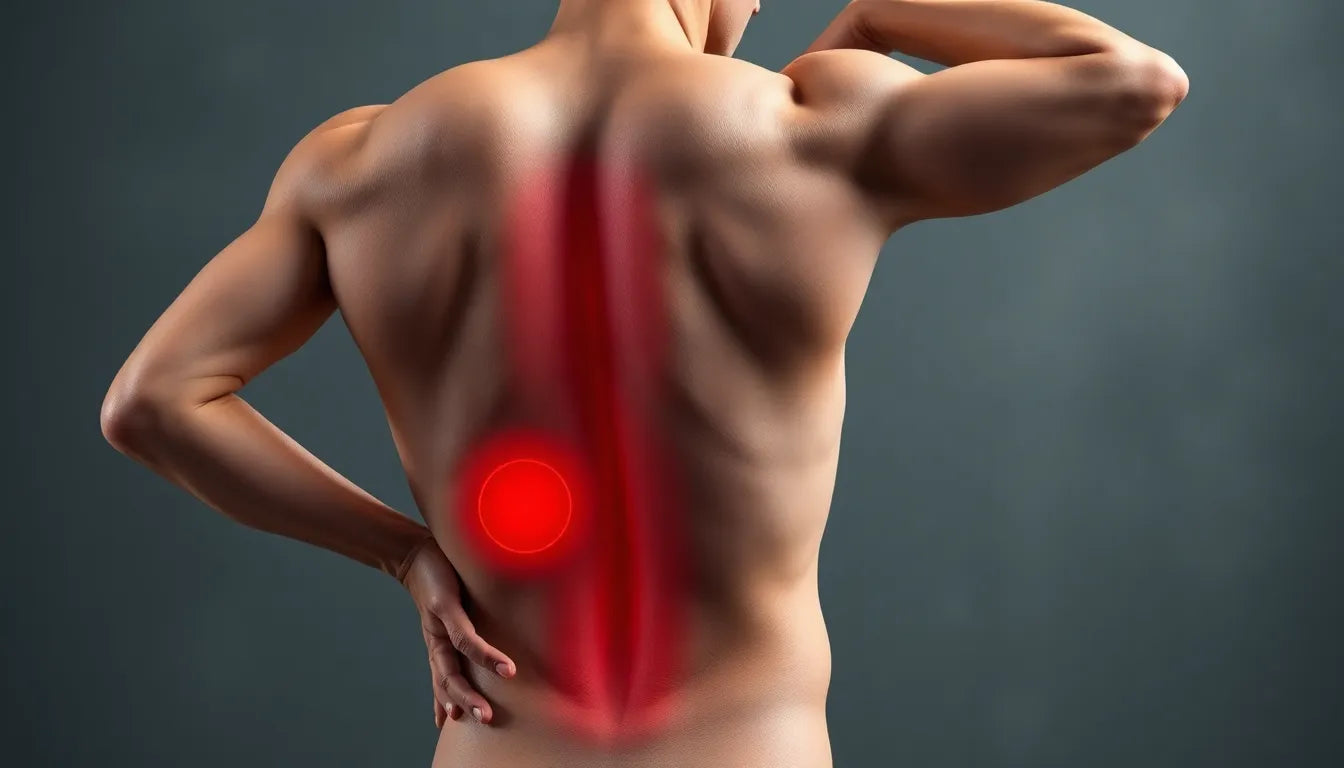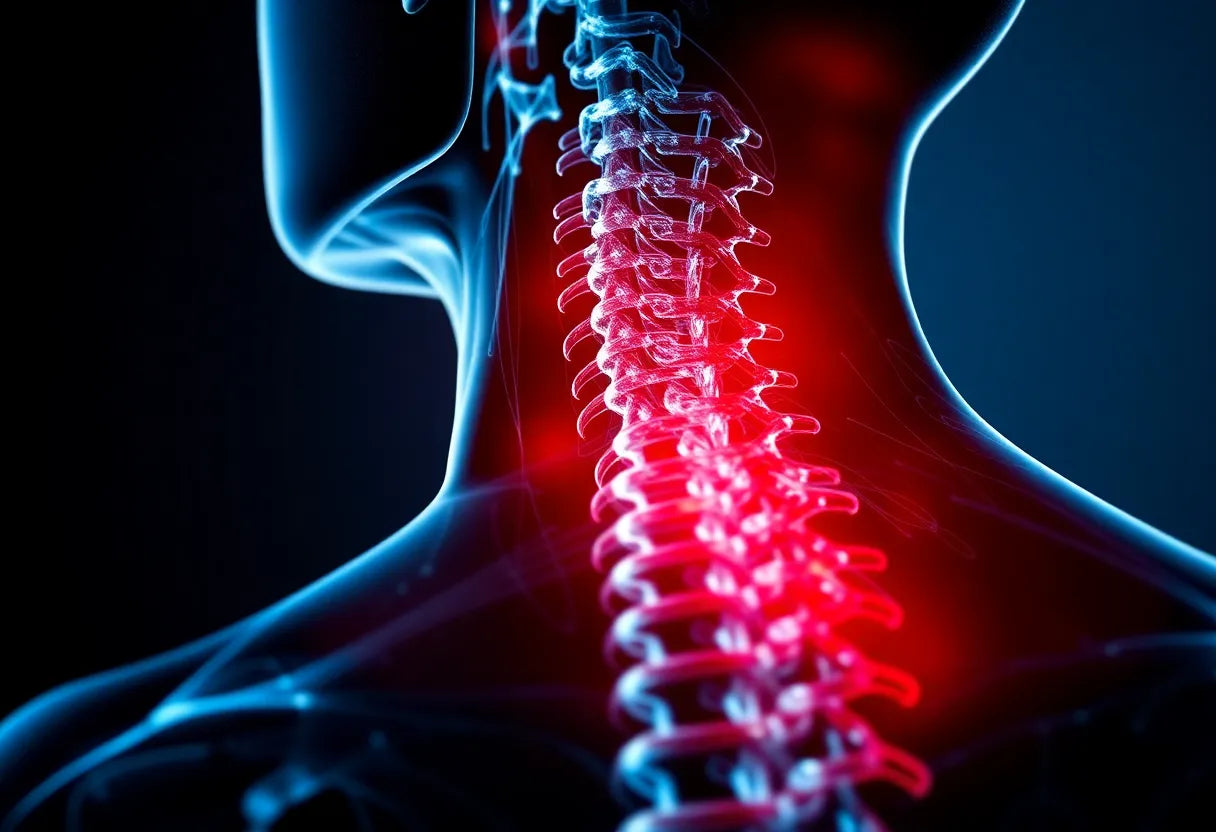Neck pain radiating to the arm, often referred to as cervical radiculopathy, is a condition that can significantly impact one's daily life. This ailment occurs when a nerve root in the cervical spine becomes compressed or irritated, leading to pain and neurological symptoms that extend down the arm. Understanding the prevalence and impact of this condition is crucial, as it affects a substantial number of individuals, hindering their ability to perform routine tasks efficiently.
Cervical radiculopathy is not only common but also disruptive, as it can lead to a range of symptoms that interfere with daily activities. The primary symptoms include sharp pain, tingling sensations, numbness, and muscle weakness in the arm. These symptoms can vary in intensity and duration, often leading to decreased productivity and a lower quality of life. The importance of recognizing these signs early and seeking appropriate treatment cannot be overstated, as timely intervention can prevent further complications and promote a quicker recovery.
Why neck pain matters
Neck pain that radiates to the arm is more than just a physical discomfort; it is a condition that can affect every aspect of life. From work performance to recreational activities, the limitations imposed by this pain can be profound. Imagine trying to focus on a task while dealing with a persistent sharp pain that extends from your neck down to your arm. The distraction and discomfort can make even the simplest of tasks seem daunting.
Have you ever experienced a sudden, sharp pain in your neck that travels down your arm? Do you find yourself wondering what this means and how to address it? These are common concerns for those dealing with cervical radiculopathy. The condition not only impacts physical health but also poses questions about the underlying causes and potential solutions. By understanding the nature of this pain and its implications, individuals can take proactive steps toward relief and improved well-being.
Addressing neck pain radiating to the arm involves a comprehensive approach that includes identifying the root causes, understanding the symptoms, and exploring effective treatment options. By doing so, individuals can find relief and regain control over their lives, free from the constraints of debilitating pain.
understanding cervical radiculopathy
Cervical radiculopathy is a medical condition where a nerve root in the cervical spine becomes compressed or irritated, leading to pain and neurological symptoms that extend down the arm. This condition is primarily caused by structural changes in the cervical spine. The most common culprits include herniated cervical discs, where the soft inner gel of the disc protrudes through the outer layer, pressing on nearby nerves. Degenerative disc disease is another frequent cause, involving the gradual deterioration of the spinal discs due to aging or wear and tear.
- Bone spurs (osteophytes) and arthritis: These bony projections can form on the vertebrae due to arthritis, leading to nerve compression.
- Cervical spinal stenosis: This refers to the narrowing of the spinal canal or the openings through which nerves exit the spine, which can impinge on nerve roots.
- Whiplash and thoracic outlet syndrome: These conditions, often resulting from trauma or repetitive strain, can also contribute to nerve compression in the cervical region.
symptoms and self-assessment
The hallmark symptoms of cervical radiculopathy include sharp, shooting pain that radiates from the neck down to the arm. This pain is often accompanied by tingling or numbness in the hand, arm, or fingers, and muscle weakness that may affect grip strength or overall arm function. For individuals experiencing these symptoms, a simple self-assessment checklist can be helpful:
- Do you experience sharp, shooting pain in your neck and arm?
- Have you noticed tingling or numbness in your hand, arm, or fingers?
- Is there muscle weakness affecting your grip or arm strength?
If you answer 'yes' to any of these questions, it may be indicative of cervical radiculopathy, and seeking medical advice is recommended.
diagnosis and red flags
The diagnostic process for cervical radiculopathy begins with a detailed physical examination, during which a healthcare provider assesses the range of motion, strength, and reflexes in the neck and arms. Imaging techniques, such as X-rays, MRI, or CT scans, are often employed to visualize the structural changes in the cervical spine. In cases where symptoms persist or worsen, electrodiagnostic testing, like electromyography (EMG), may be used to evaluate the electrical activity of nerves and muscles.
There are certain red flags that necessitate immediate medical attention. These include severe or worsening numbness and weakness, loss of coordination, and bowel or bladder dysfunction. These symptoms may indicate a more serious underlying condition requiring urgent intervention.
Understanding the intricacies of cervical radiculopathy, from its causes and symptoms to diagnosis, is crucial for effective management. By recognizing the signs early and seeking appropriate medical evaluation, individuals can embark on a path to relief and recovery, minimizing the impact of this condition on their daily lives.
treatment approaches for neck pain radiating to the arm
When it comes to managing neck pain radiating to the arm, commonly known as cervical radiculopathy, there are several effective treatment options available. The approach to treatment typically begins with conservative methods, aiming to alleviate pain and improve function without the need for invasive procedures.
conservative treatment options
The first line of management for cervical radiculopathy often involves the use of nonsteroidal anti-inflammatory drugs (NSAIDs) and oral steroids to reduce inflammation and relieve pain. These medications can be effective in managing mild to moderate symptoms, providing a good starting point for many patients.
Physical therapy is another cornerstone of conservative treatment. A tailored physical therapy program focuses on exercises that stretch and strengthen the neck and shoulder muscles, promoting better posture and reducing strain on the cervical spine. Techniques such as gentle cervical traction can also help relieve pressure on the affected nerve roots, providing significant relief for many individuals.

Men's Posture Shirt™ - Black
Patented shirt to promote better posture and potential pain relief for neck, shoulder and back.

Women's Posture Shirt™ - Black
Patented shirt that supports posture, relieves pain and increases awareness for everyday and activity.
In some cases, the short-term use of cervical collars may be recommended to limit neck movement and allow the affected area to heal. Additionally, alternative treatments like acupuncture and neuropathic pain agents can be considered for those with persistent or chronic symptoms.
advanced treatment and surgical options
For patients who do not respond to conservative measures, more advanced treatments may be necessary. Epidural steroid injections can be administered to provide targeted relief by reducing inflammation around the affected nerves. These injections are typically considered for severe or refractory cases where pain persists despite initial treatments.
Surgery is generally reserved as a last resort for individuals with significant pain or neurological deficits that do not improve with conservative or advanced interventions. Surgical options may include procedures to remove herniated discs or decompress the affected nerve roots, with the goal of providing long-term relief and restoring function.
conclusion: finding relief and prevention
Early diagnosis and treatment of neck pain radiating to the arm are crucial for effective management and recovery. By addressing symptoms promptly, individuals can prevent further complications and improve their quality of life. In addition to treatment, maintaining good posture and ergonomic practices can play a vital role in preventing recurrence. Simple adjustments, such as using ergonomic chairs or neck support pillows, can help reduce strain on the cervical spine and promote long-term spinal health.
frequently asked questions
What is cervical radiculopathy?
Cervical radiculopathy is a condition caused by compression or irritation of a nerve root in the cervical spine, leading to pain and neurological symptoms in the arm.
How is cervical radiculopathy diagnosed?
Diagnosis involves a combination of a physical exam, imaging tests like MRI or X-rays, and possibly electrodiagnostic tests to assess nerve function.
What are the first steps in managing neck pain radiating to the arm?
Initial management includes rest, anti-inflammatory medications, and a structured physical therapy program to alleviate symptoms and improve function.
When should I see a doctor for neck pain radiating to my arm?
Seek medical attention if you experience severe or worsening symptoms, loss of coordination, or bowel/bladder dysfunction, as these may indicate a more serious condition.
Can ergonomic aids help with neck pain?
Yes, ergonomic aids such as neck support pillows and proper workplace setup can help alleviate pain and prevent future episodes by reducing strain on the cervical spine.
Källor
- Docs Health. (n.d.). "7 Cervical Spine Conditions That Can Cause Radiating Arm and Hand Pain."
- WebMD. (n.d.). "Pain Management: Cervical Radiculopathy."
- Neuroendo. (n.d.). "Spine Conditions and Treatments: Neck and Arm Pain."
- PubMed Central. (2016). "Cervical Radiculopathy: A Review."
- Cleveland Clinic. (n.d.). "Cervical Radiculopathy (Pinched Nerve)."
- NCBI Bookshelf. (2017). "Cervical Radiculopathy."
- MSK Dorset. (n.d.). "Neck Pain and Neck-Related Arm Pain."
- AAPM&R. (n.d.). "Cervical Radiculopathy."
- Cleveland Clinic. (n.d.). "Neck Pain."
- Penn Medicine. (n.d.). "Radiculopathy."
- OrthoInfo. (n.d.). "Cervical Radiculopathy (Pinched Nerve)."
- Baylor Scott & White Health. (n.d.). "What's Causing My Neck Pain and Arm Pain?"
- Globus Medical. (n.d.). "Arm and Neck Pain."
- Physical Therapy First. (2018). "Four Tests to Determine if You Have a Pinched Nerve in Your Neck."























